Roofers Jacksonville FL install and repair roofs on residential and commercial buildings. They collaborate with other construction professionals to complete a project and adhere to safety protocols.
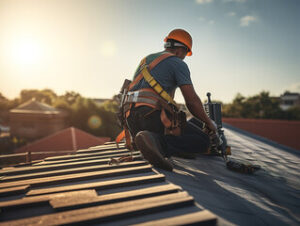
They often work in dangerous environments and need good stamina to climb and carry heavy materials up and down ladders.
Roofers are tradespeople who specialize in building and repairing the roofs of homes and commercial buildings. They also install insulation and vapor barriers to ensure that structures are well-protected against weather elements. They may work as employees of roofing contractors or construction companies, or they can operate as independent contractors. In addition to having a strong physical stamina, roofers must be unafraid of heights and comfortable working with tools.
Typically, roofers are trained through on-the-job experience or through a combination of high school, college, or industry courses. They start out by assisting senior roofers and gradually take on more responsibilities. During this time, they learn how to handle roofing materials and equipment, such as shingles, wood boards, insulation, and tools like ladders and scaffolding. Once they’ve gained enough experience, they can apply for an apprenticeship or other vocational training programs.
In the field, a roofer’s responsibilities include removing old roofing materials and preparing the site for new installation. They also inspect the structure of roofs to determine the best course of action for repairing or replacing them. Additionally, they provide clients with estimates of labor and material costs.
A roofer’s other duties include ensuring that all components of a roofing system are installed correctly, such as underlayment and waterproofing. They also install vapor barriers and insulation, which help to make buildings more energy-efficient. In some instances, roofers can even install solar panels on top of a building’s roof.
Residential and commercial roofs require different approaches, so roofers must be familiar with the unique needs of each type of structure. For example, a flat roof will need to be sealed differently than a sloped one. Roofers must also be aware of any special requirements or regulations that apply to a particular location.
In addition to installing and repairing roofs, roofers also maintain them by removing debris from gutters, chimneys, and walls. They also repair or replace flashing and seal leaks around vents, skylights, and other openings. Finally, roofers sometimes remove or replace damaged shingles or tiles. These tasks can be particularly hazardous, as roofers must use ladders or scaffolding to access the roof and may work in inclement weather conditions.
Education and Training Requirements
A high school diploma is often enough to kickstart a career as a roofer. However, a vocational school or apprenticeship may be beneficial to help you learn the specific tools and skills required for this profession. Many states require roofers to hold a state license. Typically, these require you to pass an exam, provide proof of insurance and sometimes a bond.
Roofers need to have physical strength and endurance. They must also be comfortable working at heights and have excellent hand-eye coordination. They should also be able to follow directions and be detail-oriented. In addition to these qualifications, you should be comfortable working outdoors in various weather conditions.
The majority of roofers learn on the job by working as an apprentice under a skilled journeyman or foreman. This training usually takes between three and five years and combines classroom instruction with paid practical work experience.
If you want to become a roofer, look for apprenticeship programs offered by trade unions or contractor associations in your area. You may also choose to attend a vocational school that offers roofing courses or an associate degree program in a relevant field. However, the most important part of your education is hands-on training.
Roofers use a variety of tools for their work, including ladders, hammers and power equipment. They also need to know how to operate hand tools such as crowbars, shovels and roofing nailers. Depending on the job, they may need to be able to read blueprints and understand construction and building codes.
Many states require roofers to carry a state license, and this requirement can vary by region. For example, Oregon requires roofers to pass the construction contractors or residential specialty contractor exam, and to register with the construction contractors board.
Some roofers decide to start their own businesses and become self-employed contractors. This can be a great way to control your income and schedule, but it’s important to remember that you’ll be responsible for attracting clients and managing your own business. In addition to a business plan, you’ll need to obtain general liability insurance and in some cases a bond before becoming licensed.
Working Conditions
Roofers must be able to safely access all areas of the roof they are working on. They need to use ladders, scaffolding or specialised roofing materials that provide safe passage up and down the structure. Ladders should be properly secured to prevent them from falling, which is a common cause of death in the construction industry. Ladders should be of a height that allows the roofer to work comfortably without strain. Using unsafe ladders can put roofers at risk of serious injuries such as fractured bones or head trauma.
Depending on the type of roof they are working on, roofers may encounter asbestos. This is a hazardous material that can cause cancer and other respiratory conditions when inhaled. Asbestos is most commonly found in buildings built before 2000 and roofers must be trained to recognize when they are removing old insulation or installing new materials that could contain the substance. They must also be prepared to take extra care when disposing of materials that could contain asbestos, including cleaning up waste and putting any suspected material through a bin liner before it is taken away for recycling.
In addition to falls, roofers must be prepared for other potential hazards of the job, such as heat and vibration. The physical demands of the job can also lead to musculoskeletal problems such as repetitive strain injury (RSI). Frequent changes in body positions, such as alternating between standing and sitting, can help avoid this condition.
Roofing work involves heavy lifting as well as climbing, bending and kneeling. As a result, roofers need to wear the correct personal protective equipment such as hard hats and safety boots. Gloves are also important to protect the hands from chemicals, weather effects and cuts that can occur when handling tiles, bitumen and other materials. They also need to be mindful of the need to take regular breaks from working to allow their muscles to relax and to avoid fatigue. If they have to travel between jobs, roofers need to ensure that their vehicles are roadworthy and that they are following all relevant health and safety laws.
Job Outlook
Roofers are expected to experience a strong job outlook as they continue to be in demand for new construction and repair work. The robust job prospects for this trade are attributed to the fact that roofing is generally less vulnerable to economic downturns than other aspects of the construction industry, since most roofing jobs consist of repairing or re-roofing existing structures rather than building new ones.
Those interested in becoming a roofer can pursue educational opportunities at vocational schools or training programs, although many learn the trade through on-the-job apprenticeships. These programs typically provide a wide range of hands-on experience and teach fundamental skills, including safety, building codes, and estimating materials. Students also gain an understanding of the construction process, including planning, scheduling, and costing projects.
As the need for new homes and commercial buildings continues to grow, the industry will need skilled and knowledgeable roofers to construct quality roofs. The demand for roofers is particularly strong in areas where weather conditions are extreme, such as in Florida and Arizona.
In addition to installing and repairing roofs, roofers can also install a variety of other types of building components, such as damp-proofing and waterproofing. This type of work is often performed in conjunction with other tradespeople, such as carpenters and plumbers.
Some roofers are trained to install green or energy-efficient roof systems. These can include solar reflective systems that prevent the absorption of heat, solar thermal systems that use sunlight to heat water, and photovoltaic systems that convert sunlight into electricity. Increasingly, homeowners and businesses are turning to these types of systems in order to reduce energy costs and protect the environment.
Roofers can also install a number of other types of building accessories, such as attic fans and ventilation ducts. These products help to control moisture and improve air circulation, which can lead to improved occupant comfort and energy efficiency. Other accessories that can be installed on roofs include skylights, which allow natural light to penetrate into dark spaces, and insulation, which helps to increase the energy efficiency of a structure.


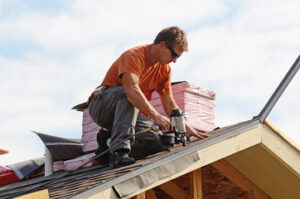


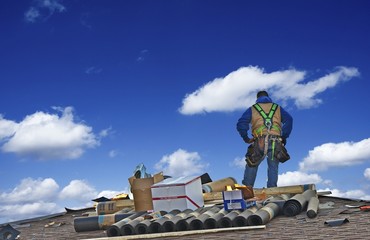
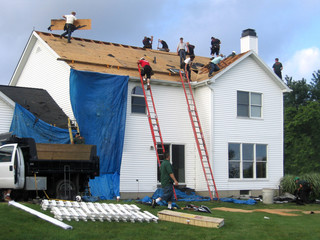
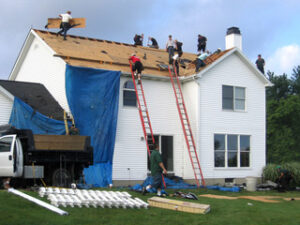 Overlays are another way to enhance the looks of your roof. The process of overlaying your roof is known as reroofing.
Overlays are another way to enhance the looks of your roof. The process of overlaying your roof is known as reroofing.